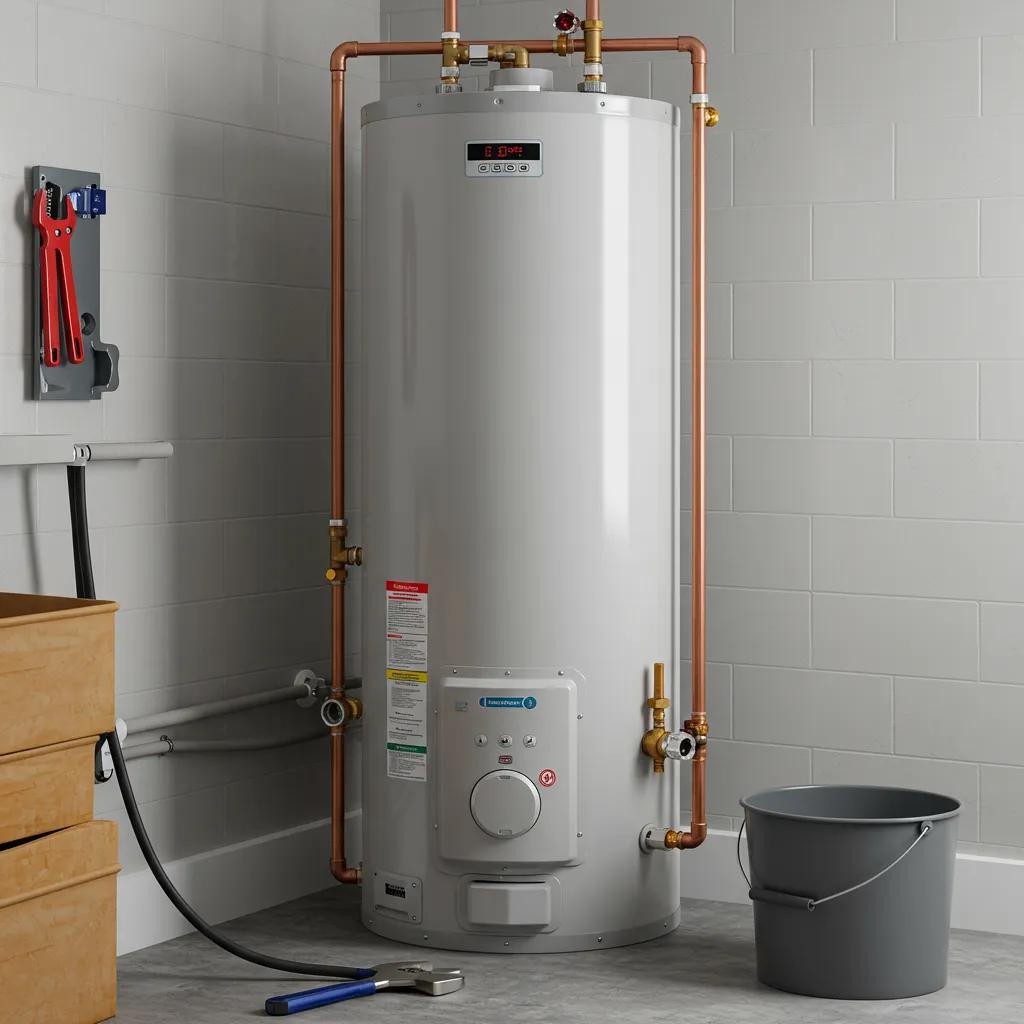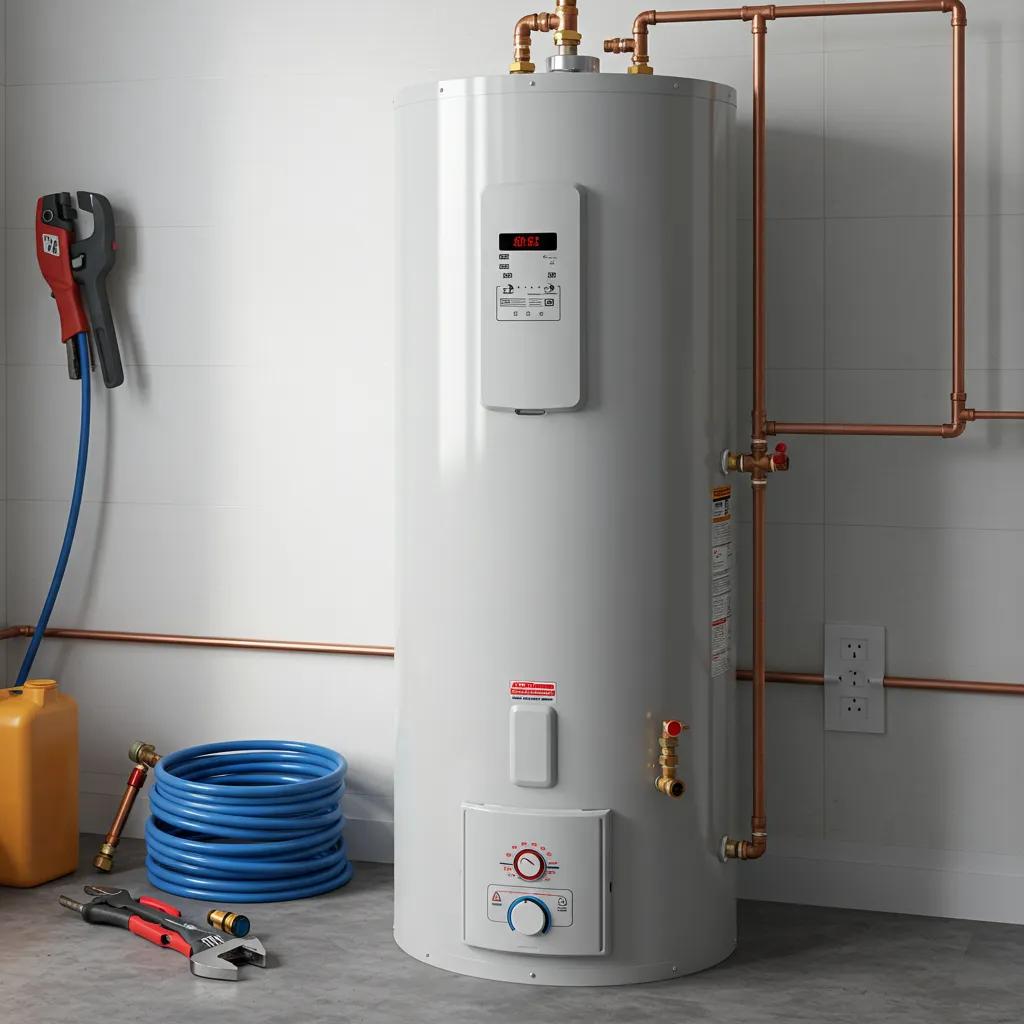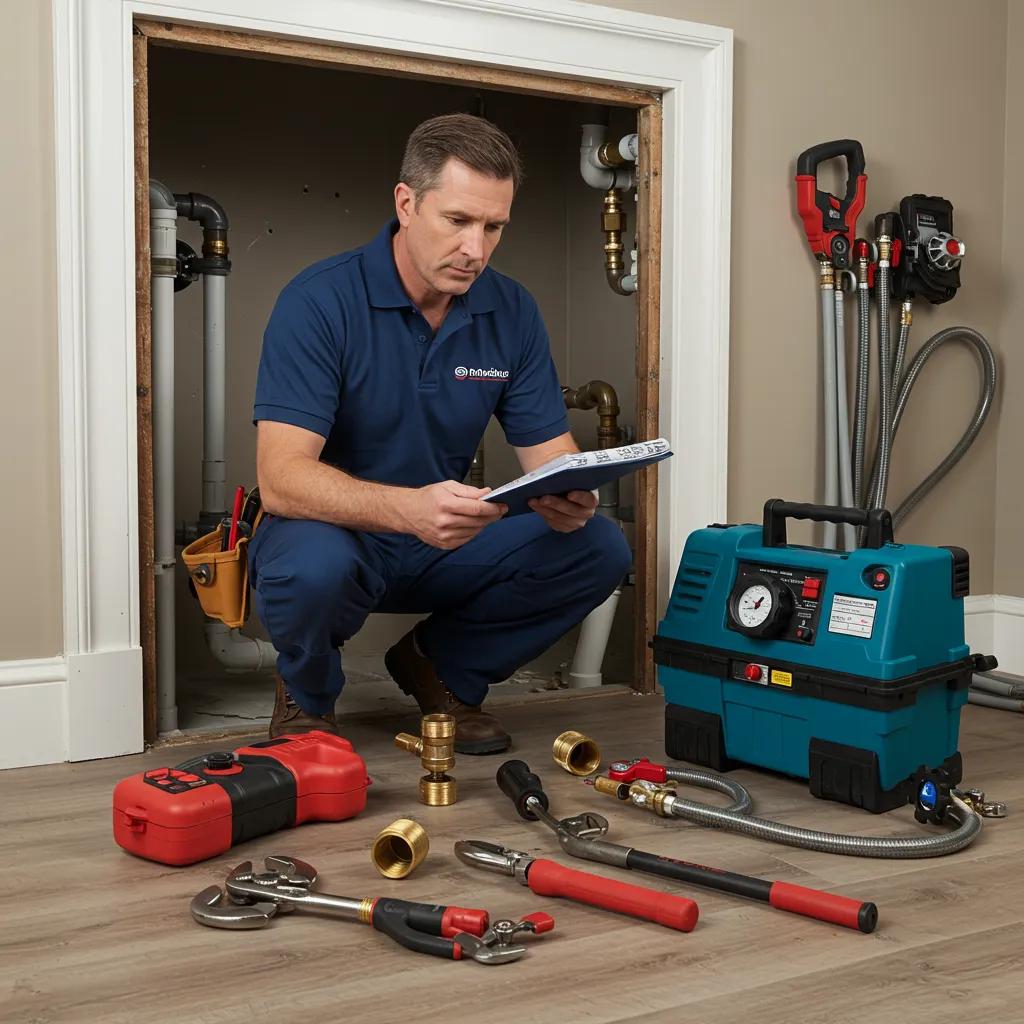Understanding Tankless and Traditional Water Heaters: Which Is Best for Your Home?
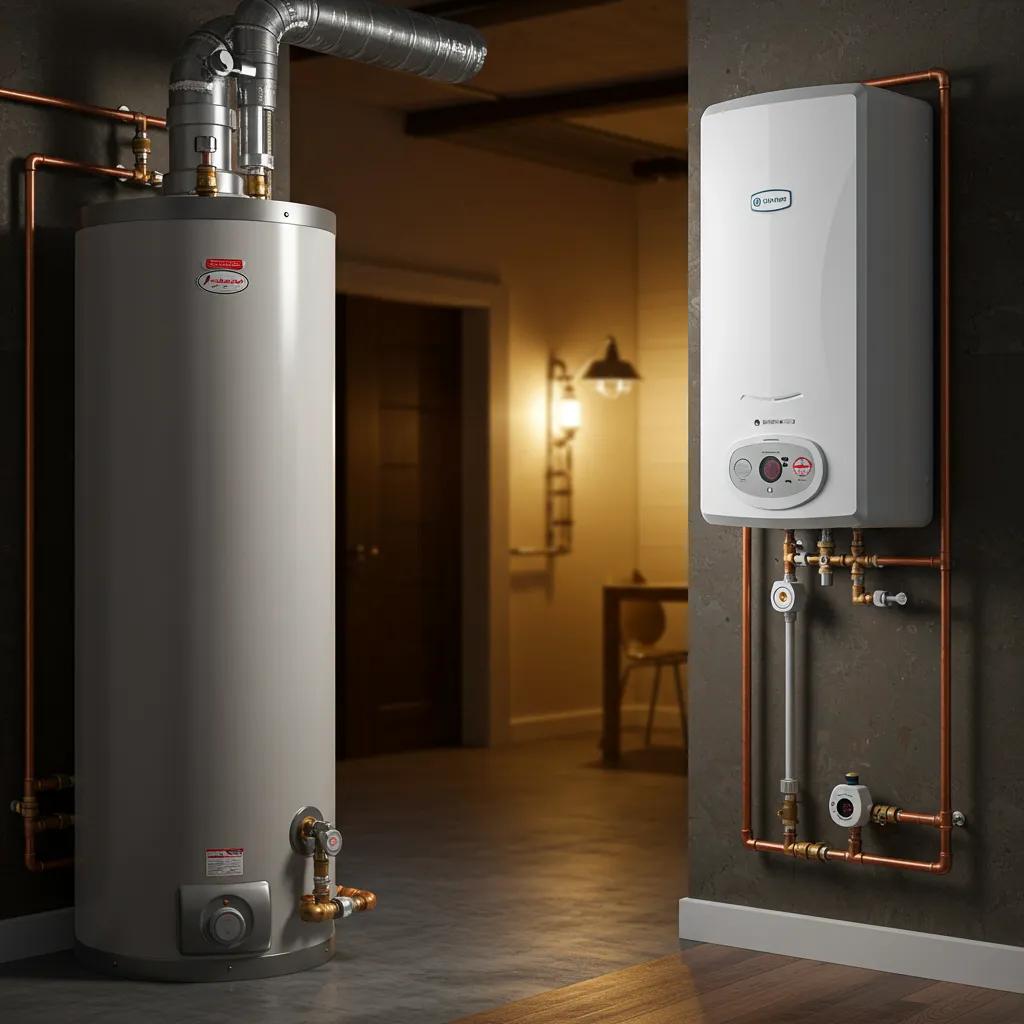
Choosing between a tankless or traditional water heater can determine your comfort, energy bills, and available space. Homeowners often wonder what are the main differences between tankless and traditional water heaters for plumbing installations and operating costs. This guide explains how each system works, compares upfront investment and long-term savings, explores local factors in Erie, PA, and outlines maintenance essentials. You’ll learn how household size, fuel type, and energy efficiency influence your decision. We’ll also share typical installation costs in Erie County, maintenance routines, and why C. Carlin Plumbing is the trusted expert for water heater installation and repair.
What Is a Traditional Water Heater and How Does It Work?
A traditional water heater is a storage tank unit that heats and holds a fixed volume of water, ready for use. Inside the tank, an electric element or gas burner brings water up to a set temperature, then sensors maintain that temperature through periodic reheating. This mechanism provides continuous access to hot water within the tank’s capacity. By storing preheated water, conventional units deliver reliable performance during peak usage, though standby heat loss can impact efficiency.
Traditional water heater operation relies on a combination of insulated storage and thermostatic control. When a tap opens, hot water exits the top of the tank while cold water enters at the bottom, triggering the heating cycle. This cycle repeats as needed, ensuring a reserve of hot water. Understanding how this cycle operates prepares homeowners to evaluate capacity constraints and energy implications before comparing with on-demand systems.
What Are the Key Features of Conventional Storage Tank Water Heaters?
Before examining benefits and drawbacks, consider these core characteristics of conventional tanks:
- Storage capacity typically ranges from 30 to 80 gallons, matching average household hot water demand.
- A heating element or gas burner heats water inside an insulated steel tank, then cycles on to maintain temperature.
- Standby heat loss occurs as stored water gradually cools, requiring reheating and increasing energy use.
- Physical dimensions vary but generally require a footprint of 2–4 square feet and clearance for maintenance.
These features highlight that traditional units perform well under heavy demand but occupy more space and incur standby heat loss. Recognizing these aspects leads to a clear evaluation of on-demand alternatives.
What Are the Typical Advantages of Traditional Water Heaters?
Traditional water heaters offer practical benefits for many homes:
- They require lower upfront investment than tankless systems, making replacements more budget-friendly.
- Installation is straightforward with minimal modification to existing plumbing and venting.
- Replacement parts and repair services are widely available, ensuring quick after-sale support.
These advantages make conventional storage tank units an accessible choice for households prioritizing a modest initial outlay and simple installation. Next, we’ll explore the potential limitations under repeated heavy use.
What Are the Common Disadvantages of Traditional Water Heaters?
Conventional tank models come with inherent trade-offs:
- Limited hot water supply can result in “cold water sandwich” effects during back-to-back showers.
- Larger footprint demands dedicated floor space or closet clearance, reducing usable storage areas.
- Higher operating costs arise from standby heat loss and less efficient reheating cycles over time.
Understanding these limitations helps homeowners weigh whether on-demand technology better fits space-constrained or energy-conscious applications.
What Is a Tankless Water Heater and How Does It Provide Hot Water On Demand?
A tankless water heater heats water directly only when a tap is opened, eliminating the need for a storage tank. Inside the unit, high-efficiency burners or electric elements engage as water flows through a heat exchanger, instantly raising temperature. This mechanism provides endless hot water while reducing standby heat loss, since no water sits waiting between uses.
How Do Tankless Water Heaters Deliver Endless Hot Water?
Tankless water heaters provide an uninterrupted hot water supply by heating water in real time. When a fixture opens, a flow sensor triggers the burner or element to ramp up within seconds. As water passes through the exchanger, it absorbs heat and exits at the set temperature. This on-demand mechanism makes cold water runs obsolete for households with steady flow requirements.
By matching heating capacity to actual demand, tankless models eliminate storage limitations. Homeowners experience consistent temperature stability even during prolonged showers or simultaneous appliance use. Understanding this flow-activated process sets the stage for exploring efficiency gains and spatial advantages.
What Are the Main Benefits of Tankless Water Heaters?
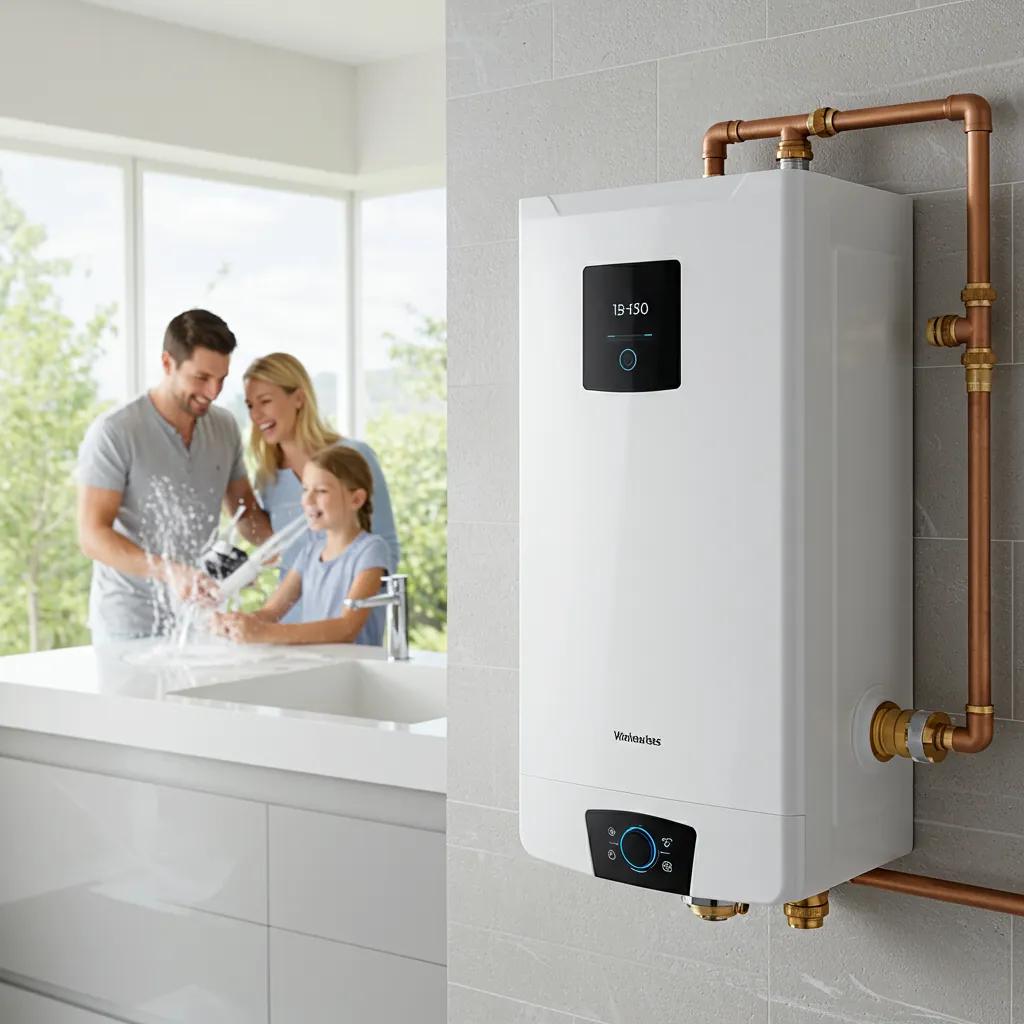
On-demand water heater systems deliver clear advantages:
- Energy efficiency improves by 24–34% for homes using under 41 gallons of hot water daily.
- Compact design frees up valuable floor space and allows wall mounting in tight utility closets.
- Extended lifespan of 15–20 years reduces replacement frequency and lifecycle costs.
These benefits appeal to energy-conscious homeowners and those with limited installation space. The next section examines installation and maintenance considerations.
What Are the Potential Drawbacks of Tankless Water Heaters?
Tankless systems also involve important trade-offs:
- Higher upfront cost ranges from $1,000 to $3,000 for the unit plus installation expenses.
- Complex installation may require upgraded gas lines, venting modifications, or electrical enhancements.
- Periodic descaling is needed to prevent mineral buildup in hard-water regions like Erie, which can reduce flow efficiency.
Balancing these factors against long-term savings helps homeowners determine if on-demand technology aligns with their requirements.
How Do Tankless and Traditional Water Heaters Compare: Key Differences at a Glance?
Comparing core attributes side by side clarifies which system best suits your home. The table below contrasts upfront and operating expenses for each type:

This comparison shows that although tankless models involve higher initial investment, they deliver substantial energy savings over time. Next, we’ll explore hot water capacity differences in more detail.
What Are the Differences in Upfront and Operating Costs?
Traditional storage units cost between $600 and $1,200 including labor, with energy bills reflecting continuous reheating. By contrast, tankless installations range from $2,000 to $7,400 in Erie due to specialized venting and gas-line work. However, annual operating savings on tankless systems—ranging from 8% to 34% depending on usage—accelerate payback and reduce lifetime energy expenses.
How Do Hot Water Supply and Capacity Vary Between Types?
Hot water capacity depends on tank size for conventional units versus flow rate for on-demand systems. The table below illustrates supply performance:

Traditional tanks may run out under heavy simultaneous demand, whereas tankless units sustain flow up to their GPM limit. Recognizing this difference informs selection based on household usage patterns.
What Are the Space and Installation Requirements for Each Type?
Traditional tanks require a floor footprint of 2–4 square feet and 12–18 inches of clearance for servicing. Tankless units mount on walls and occupy less than one square foot, but typically need dedicated venting pathways and possible gas or electrical upgrades. Homeowners gain floor space with on-demand models, while conventional systems remain the simplest retrofit in existing installations.
How Do Lifespan and Maintenance Needs Differ?
Conventional tanks last 8–12 years with an annual flush to remove sediment. Tankless models endure 15–20+ years but require descaling every 1–3 years in areas with hard water. Regular maintenance on both types preserves efficiency and extends operating life. Planning for these routines ensures reliable performance and prevents emergency repairs.
Which Water Heater Is Best for Your Erie, PA Home? Key Factors to Consider
Choosing the ideal system for Erie homes involves analyzing several local and household variables. Weather patterns and water quality in Erie County can affect performance, while family size dictates capacity needs. Budget considerations balance upfront outlay against water heating bills over the system’s life. Fuel type options—gas or electric—also influence efficiency ratings and operating costs in your specific utility environment.
Evaluating these factors creates a holistic decision-making framework. Next, we’ll examine each criterion in detail to guide Erie homeowners toward the best match.
How Does Household Size and Hot Water Demand Affect Your Choice?
Larger families with multiple simultaneous showers benefit from a high-capacity tank or a multi-point tankless configuration capable of 5+ GPM. Smaller households using under 40 gallons daily often realize peak efficiency gains from a single on-demand unit. Matching system capacity to usage patterns prevents supply shortages and optimizes operational costs.
What Role Does Budget Play in Choosing Between Tankless and Traditional?
An initial budget under $1,200 typically narrows options to conventional storage tanks. Homeowners planning to remain in their home for 10–20 years can justify the higher $2,000–7,400 investment for tankless efficiency and extended lifespan. Evaluating payback periods—often 5 to 10 years—helps balance upfront versus long-term savings.
How Do Fuel Type and Energy Efficiency Influence Your Decision?
Gas tankless water heaters deliver faster heating and higher flow rates than electric models but require proper venting. Electric tanks and tankless units simplify installation but generally carry higher operating costs in regions with high electricity rates. Reviewing energy efficiency ratings (UEF, Energy Star) for both types ensures optimal performance aligned with local utility structures.
What Local Factors in Erie, PA Should You Consider?
Erie’s moderately hard water may accelerate scale buildup, making descaling critical for tankless units. Cold winter temperatures can affect delivery temperatures in on-demand systems, requiring higher flow-rated models. Local incentives through utility providers or rebates for high-efficiency units further offset installation costs. Factoring in these Erie-specific conditions secures reliable hot water year-round.
What Are the Typical Installation and Replacement Costs for Water Heaters in Erie, PA?
Understanding current cost ranges in Erie County helps align expectations. Installation expenses reflect regional labor rates, permit requirements, and accessory upgrades. Replacement of conventional tanks remains the most affordable route, whereas on-demand installations demand specialized trades and materials.
Estimating these costs early prevents budget surprises and streamlines planning. Detailed cost breakdowns follow for both system types.
How Much Does Tankless Water Heater Installation Cost in Erie?
Tankless water heater installations in Erie typically range from $2,500 to $7,400 including unit, venting, gas-line upgrades, and labor. The exact price depends on flow rate capacity, model brand, and modifications to existing infrastructure. Higher-end units and extensive venting runs increase initial investment, while simpler retrofits sit at the lower end of the spectrum.
What Are the Replacement Costs for Traditional Water Heaters in Erie?
Replacing a conventional storage tank water heater in Erie County generally costs between $1,600 and $5,400. Factors include tank capacity, fuel type, venting adjustments, and permit fees. Standard 40–50-gallon electric or gas units fall toward the lower end, while larger tanks or higher-efficiency models command premium pricing.
Are There Local Rebates or Incentives for Energy-Efficient Water Heaters?
Erie residents can access rebate programs from regional utility providers offering $100–$500 incentives for high-efficiency storage tanks or tankless systems. Federal tax credits also apply to units meeting Energy Star criteria. Combining local incentives with manufacturer promotions reduces net installation costs and accelerates ROI on energy savings.
How Can You Maintain Your Water Heater for Optimal Performance and Longevity?
Routine maintenance preserves efficiency and prevents unexpected failures. Both conventional and on-demand systems benefit from periodic service checks that address sediment buildup, component wear, and safety controls. Adhering to manufacturer recommendations and seasonal inspections extends service life and maintains performance.
What Maintenance Does a Traditional Water Heater Require?
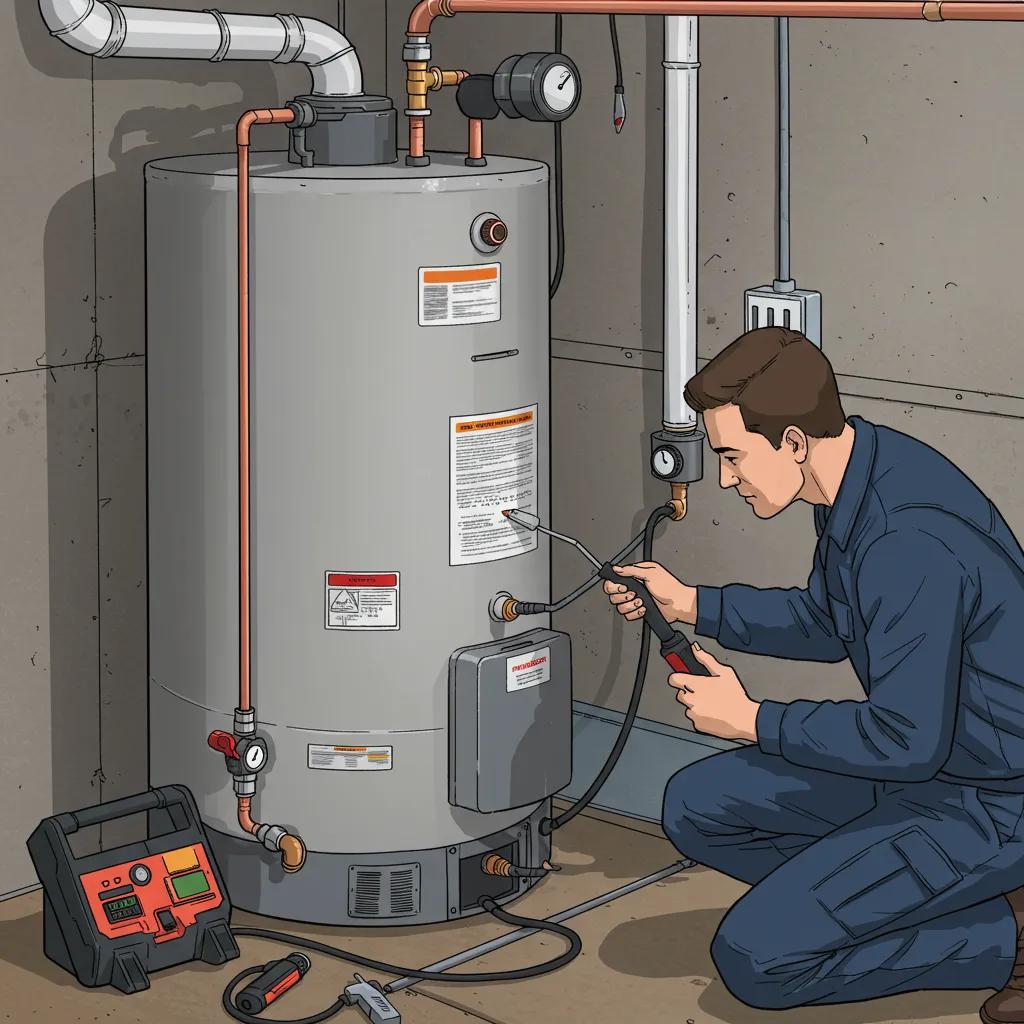
Traditional tanks require annual flushing to remove sediment that accumulates at the bottom of the tank and reduces heating efficiency. Inspecting the anode rod every 2–3 years prevents corrosion. Checking pressure relief valves and thermostat settings ensures safe operation. These steps support reliable hot water delivery and prevent early tank failure.
How Do You Maintain a Tankless Water Heater?
Maintaining a tankless water heater involves descaling every 1–3 years in hard-water areas like Erie. Flushing the heat exchanger with a vinegar solution or descaling agent dissolves mineral deposits. Cleaning inlet filters and checking venting components for blockage maintain optimal flow rates and heat transfer efficiency.
When Should You Schedule Professional Water Heater Repair or Service?
Schedule professional service at the first signs of reduced hot water temperature, unusual noises, water leaks around the unit, or error codes on digital displays. C. Carlin Plumbing offers 24/7 emergency repair for critical issues such as total hot water loss or leak-induced damage. Prompt intervention avoids costly water damage and restores performance quickly.
Why Choose C. Carlin Plumbing for Your Water Heater Installation and Repair in Erie, PA?
C. Carlin Plumbing has served Erie County since 1994, earning a reputation for fast, reliable, and honest service. Licensed and insured technicians bring over 150 years of combined experience to each water heater project. Whether installing cutting-edge tankless systems or replacing conventional tanks, their team delivers quality workmanship with transparent pricing.
Choosing local expertise ensures familiarity with Erie’s building codes, climate challenges, and utility incentives. As a one-stop shop for plumbing and HVAC needs, C. Carlin Plumbing simplifies coordination and provides prompt emergency support 24/7.
What Expertise Does C. Carlin Plumbing Offer for Tankless and Traditional Water Heaters?
Technicians at C. Carlin Plumbing are trained and certified to install and repair all major water heater brands—gas, electric, tankless, and conventional. Their deep knowledge of flow-rate calculations, venting requirements, and local regulations guarantees correct system sizing and code-compliant installations.
How Does C. Carlin Plumbing Ensure Transparent Pricing and Fast Local Service?
Upfront quotes outline unit costs, labor charges, and permit fees before work begins, eliminating surprises. A strong local presence enables same-day or next-day appointments, and emergency crews are available around the clock to address urgent issues without delay.
What Do Erie Customers Say About Their Water Heater Services?
Homeowners commend C. Carlin Plumbing for respectful technicians, clean installations, and clear explanations of repair options. Rapid response to emergency hot water failures and adherence to quoted pricing reinforce trust. Community-focused service ensures every homeowner feels supported from estimate through final inspection.
What Are the Most Common Questions About Tankless and Traditional Water Heaters?
Homeowners frequently compare on-demand and storage models to determine which aligns with their lifestyle, budget, and space. Below are concise answers to the most common queries that guide decision-making for Erie area residents.
What Is the Main Difference Between Tankless and Traditional Water Heaters?
The main difference is that tankless water heaters provide hot water on demand by heating flow through a heat exchanger, delivering unlimited supply within flow limits, while traditional units store and continuously reheat a finite volume in an insulated tank.
Is a Tankless Water Heater Worth the Extra Cost?
A tankless water heater often justifies its higher upfront cost through 8–34% reduced energy consumption, a 15–20-year lifespan, and space savings in compact installations. Payback periods typically range from 5 to 10 years depending on usage levels.
How Long Do Tankless Water Heaters Last Compared to Traditional?
Tankless water heaters usually last 15–20 years with proper maintenance, whereas traditional tanks have an expected lifespan of 8–12 years before replacement is advised.
Which Water Heater Is More Energy Efficient?
Tankless water heaters are more energy efficient, reducing standby heat loss and improving UEF ratings by up to 34% for moderate usage, while storage tanks lose heat continuously and operate less efficiently overall.
What Size Tankless Water Heater Do I Need for My Home?
Determine the required GPM by tallying simultaneous appliance and fixture usage—showers, sinks, dishwashers. A typical family of four may need a 5–7 GPM unit to avoid temperature fluctuations under peak demand.
What Are the Disadvantages of Tankless Water Heaters?
Disadvantages include higher initial investment, potential need for gas-line or electrical upgrades, and regular descaling maintenance in hard-water regions to prevent flow restrictions.
C. Carlin Plumbing offers tailored guidance to help Erie homeowners match system capacity to usage patterns and local conditions.
Contact C. Carlin Plumbing today to schedule a free estimate and ensure reliable hot water for your Erie home. Their experienced team stands ready to install or service traditional and tankless water heaters with transparent pricing and prompt local response.

